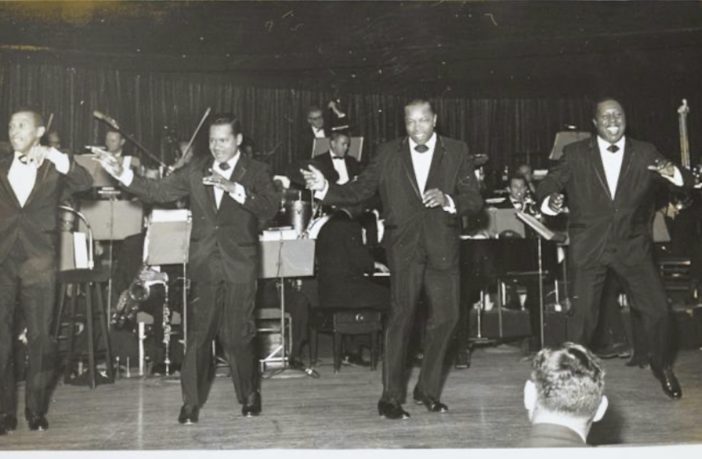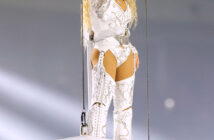By Mekhi Abbott
Special to the AFRO
mabbott@afro.com
Originally beginning as a trio in 1925, The Four Step Brothers formed a legendary tap dancing group that is still revered almost a century later. Maceo Anderson, founder of The Step Brothers, always took a liking to dance. As a young boy living in Los Angeles, he used to sneak into the Lafayette Theatre to watch and mimic dance routines alongside his friends.
At the ripe age of 15 years old, Anderson recruited Al Williams and Red Walker to form what was originally known as The Step Brothers. To avoid confusion with another young, high-profile tap dancing crew with the same name, they changed their name to “The Three Step Brothers.” When Sherman Robinson was added to the team, they adopted the name “The Four Step Brothers.”
The quartet began their journey traveling with world-renowned musician Duke Ellington. The group would regularly show off their talents performing at the prestigious Cotton Club in Harlem, N.Y. in their early years. The Four Step Brothers are credited with being the first Black act to perform at Radio City Music Hall, something they did perennially for a whole decade. However, their performances wouldn’t be confined solely to New York. As a matter of fact, they “tapped” their way across the globe a reported four times.
“I learned about The Four Step Brothers a few years back in my high school dance history class. The Four Step Brothers for many years broke barriers in dance and they’re a part of Black history. The Four Step Brothers are known for their integration of dance moves,” said former dancer Joslyn Smith, a student of University of Maryland, College Park.
The Four Step Brothers were revered for their complex dance moves in which they incorporated rhythm tap, straight acrobatics, blues dancing and the camel walk, which was a move heavily used by singer and songwriter James Brown when he would perform. One of the signature parts of their performances were when they would do “challenge dances.” The Four Step Brothers would each do a solo while the other three would stand back and make a beat themselves by stomping their feet and clapping their hands. Each dancer’s goal was to outdo the other three.
The Four Step Brothers would go on to perform for former presidents Harry Truman and Dwight D. Eisenhower. They also had an appearance on The Ed Sullivan Show. The “Brothers” ended up being one of the longest-lasting dance groups in history as they would perform together for more than four decades, when founder Anderson was in his 50s.
“Being a part of art during the period of the Harlem Renaissance spoke volumes. put them in places like the Cotton Club and allowed them to perform in a series of movies,” said Smith. “Using those skills really set them apart, increased their business as a dance team and gave them the opportunity to appear in more movies and music.”
The Four Step Brothers received two Lifetime Achievement Awards on behalf of the Dance Masters of America. They received their first in 1960 and then the latter in 1985 for breaking the color barrier in dance. Three years later, in 1988, The Four Step Brothers were honored with a star on the Hollywood Walk of Fame.
Although the group stayed together for almost 40 years, the brothers that made up the group did change a few times. Edward Bozeman was one of the more notable additions to the group. He had danced professionally previously and went by the nickname “Prince.”
Bozeman would typically dance last and was particularly known for his acrobatics and flips. One of the great things about The Four Step Brothers is that they would always allow each other to do in their own style. Bozeman, likely due to his energy and athleticism, remembers other members thinking he was a kid when in all actuality he was 35 years old when he joined the group.
In 1968, the final addition to the group was a then 10-year-old kid who was only in the fourth grade when he got recruited to join the crew. Terry Criner, who was also known as “Little Terry,” had a dance style that was very similar to Bozeman’s, but Criner came with even more energy and more advanced tricks such as no-hand head flips. Criner would even incorporate break dancing moves like head spins. Criner was taken under Anderson’s wing as the founder of The Four Step Brothers and Anderson would assist in refining Criners tap dancing so it could be up to par with his acrobatics.
After some convincing from Anderson, Criner decided to continue to carry the baton and created a new dance group called Third Generation Steps. The group was made up of Criner, Cindy Notz and Ivery Wheeler. Third Generation Steps would see 11 years of success in the show business, but at the young age of 21, Criner decided to retire and with him went the Third Generation Step crew.
Some of Anderson’s relatives decided to walk in the footsteps of his legacy and also pursue a career in dance. Robert L. Reed, who is the grandson of Anderson, actually became a dance professor and did a little bit of live performance himself. He went on to establish his own dancing school called Robert L. Reed Tap Heritage Institute, which is located in St. Louis, Missouri. He founded the St. Louis Tap festival in 1992 and on July 30, 2005, St. Louis mayor Francis Slay declared that day to be “Robert L. Reed Tap Heritage Day.”


